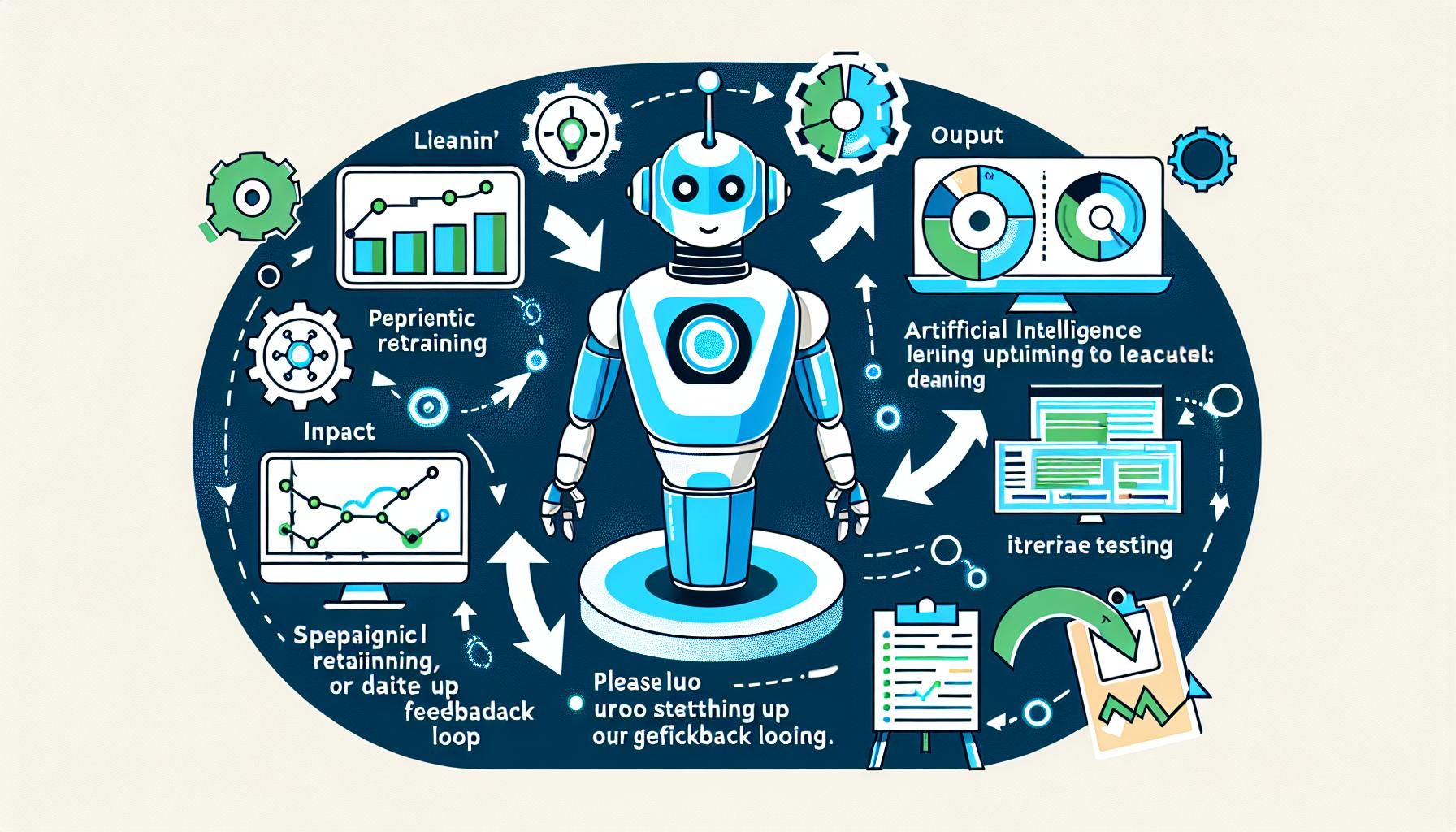A.I. Training
Hybrid Training: Combining Human Feedback and AI Evaluation
Explore the synergistic potential of combining human feedback with AI-driven scoring systems for a more robust training approach.
Continuous Learning: Feedback Loops to Keep Your AI Assistant Up-to-Date
Discover techniques for maintaining ongoing feedback loops to ensure continuous learning and relevance for AI assistants, enhancing user satisfaction and operational efficiency.
User-Driven Insights: Allowing Users to Rate AI Responses
Discover the significance and techniques of incorporating user ratings to enhance AI assistants, transforming them into responsive tools that adapt to real-world needs.
OpenAI: Technical Insights into Vector Stores and Fine-Tuning Models
Discover the technical differences, best use cases, and practical examples of how OpenAI leverages vector stores versus fine-tuning models.
Mastering JSON Mode with OpenAI Assistants: A Comprehensive Guide
Learn how to effectively use JSON mode with OpenAI assistants, including step-by-step instructions, use cases, and examples to enhance your AI integration projects.
Building OpenAI Assistants: Optimal File Formats for Vector Stores and Fine-Tuning
Learn how to build OpenAI Assistants by understanding the best file formats for importing data into vector stores and fine-tuning models. Includes a guide on scraping websites and converting data to JSON.
Mastering the Training of OpenAI Assistants: Instructions vs Vector Store vs Fine-Tuning
Discover the optimal approaches for training OpenAI Assistants, exploring the benefits and drawbacks of using instructions, vector stores, and fine-tuning.
Optimizing OpenAI Configuration: Temperature, JSON Format, and More for Different Use Cases
Learn how to configure OpenAI's settings like temperature, JSON format, and max tokens for various applications, from creative writing to technical documentation.
Best Practices for Formatting and Building Instructions for an OpenAI Assistant
Learn how to craft effective instructions for OpenAI assistants with best practices, a detailed example, and insights on how RAIA helps businesses build AI easily.
OpenAI Assistants: How to Create and Use Them
Unlock the potential of personalized AI assistants with OpenAI's Assistants API. Learn how to create your own using both the Playground UI and Python APIs.
Training Open AI Assistants: A Comprehensive Step-by-Step Guide
Explore how to effectively train AI models using fine-tuning, data preparation, and advanced techniques while leveraging RAIA's powerful tools.
How to Train an AI Model: A Comprehensive Guide for Beginners
Learn step-by-step how to train an AI model, the challenges faced, best practices, and how RAIA can assist in the entire process.
A Comprehensive Guide to Deploying AI Agents: Steps for Success
Learn the essential steps to deploy AI agents effectively, including how RAIA assists with training and testing, ensuring optimal performance and reliability.
Bypassing LLM Refusal Training with Past Tense Prompts: A Comprehensive Exploration
Explore how past tense prompts can bypass LLM refusal training, along with other jailbreak techniques, future-oriented prompt perceptions, and the effectiveness of mitigation strategies.
Mastering Self-Criticism Prompting: Techniques, Examples, and Use Cases
Explore the world of Self-Criticism Prompting in AI, its techniques, advantages, and real-world applications with detailed examples.
Unlocking the Power of AI with Program-of-Thoughts Prompting (PoTh)
Explore how Program-of-Thoughts Prompting (PoTh) enhances AI's problem-solving abilities through code generation and execution, featuring detailed examples and use cases.
Advanced Prompt Engineering: Harnessing Plan-and-Solve Prompting in AI
Discover the power of Plan-and-Solve Prompting to enhance AI problem-solving through structured reasoning processes.
Mastering Advanced Prompt Engineering: Least-to-Most Prompting Technique
Learn how to effectively use Least-to-Most Prompting (LtM) in AI, breaking down complex problems into manageable steps for better results.
Mastering Advanced Prompt Engineering: Basics of Problem Decomposition Prompting
Discover how problem decomposition prompting enhances AI capabilities by breaking down complex queries into simpler sub-tasks.
Understanding Contrastive Chain-of-Thought Prompting (CCoT) in AI: Examples and Use Cases
Discover the principles of Contrastive Chain-of-Thought Prompting (CCoT), its process, applications, and practical examples.
Mastering Thread-of-Thought (ThoT) Prompting: A Comprehensive Guide
Dive deep into Thread-of-Thought Prompting, an advanced technique that significantly enhances AI's performance in complex scenarios. Learn its essence, working, applications, and implementation.






















